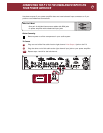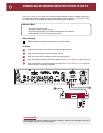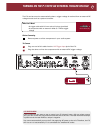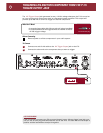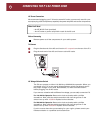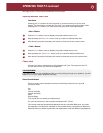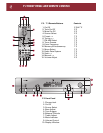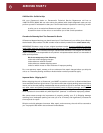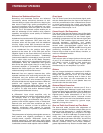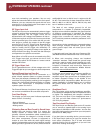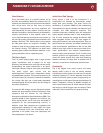
PARASOUND P 3 DESIGN OVERVIEW
Audio Circuit Path Topology
Direct Inputs 1 and 2 of the Parasound P 3
preamplifier are selected by hermetically sealed
relays with gold contacts. The other inputs are
switched by a precision CMOS IC with outstanding
characteristics for signal overload, low distortion and
crosstalk, and wide frequency response. This
provides longer-term reliability than the mechanical
rotary selector switches used in most preamplifiers.
The P 3 also employs the newest Burr-Brown OPA
2134 integrated circuits with FET input stages for
audio gain functions in the audio signal path. They are
laser-trimmed for precision and boast incredibly low
noise and distortion specifications. We run the OPA
2134s at very high current to assure pure class A for
linear performance and musical characteristics,
without fatigue and harshness. The P 3 volume and
balance controls are high-precision analog volume
control ICs which provide very close level matching
between channels, far closer than is possible with a
manual or motor-driven mechanical potentiometer.
Functionality
The P 3’s elegant front panel control and status
display make it easy to use. Its remote handset
provides convenient control over both the P 3 and the
matching Parasound T 3 Tuner. Separate On and Off
remote commands permit system programming for
unambiguous on/off status. Features that facilitate P 3
system integration include its RS232 interface for
more robust control than IR, wired external IR input
and loop out, and DC trigger input and output. These
make the P 3 as functional as it is great sounding.
Parts Selection
Every part within the P 3 is carefully chosen for its
accuracy and reliability. Metal film resistors with 1%
tolerance are selected for their precision and because
their values don’t drift as they heat up during
operation. Polypropylene and mica capacitors are
used extensively for their superior linearity and low
dielectric absorption. Semiconductors are selected for
superior performance in their specific roles in the
circuit. Gold has the best conductivity of any metal, so
we use high quality gold-plated input connectors and
speaker terminals. The double-sided circuit boards
are FR4 glass epoxy for long-term durability. The
chassis is made of heavy gauge steel to safely house
the internal circuitry. This attention to detail when
selecting parts makes the difference between a very
good preamplifier and an outstanding one.
The Power Supply
The P 3 power supply begins with a large toroidal
power transformer that is chosen for its high
efficiency, low radiated hum, and high current rating.
Encapsulating the power transformer in an epoxy-
filled steel canister assures ultra-quiet performance.
The audio signal path circuits and the
switching/control circuits have independent closely
regulated power supplies. This preserves the purity of
the audio signal by preventing interference between
the circuits. We also use a hand-made detachable
audiophile-grade AC cord to deliver the AC voltage to
the power transformer.
To create the DC voltage, we use high-speed rectifier
diodes and large-capacity Nichicon electrolytic filter
capacitors that are famous for low dielectric
absorption and Effective Series Resistance (ESR). Two
precision 6,800 uF filter capacitors are used for the
audio signal path B+ and B- rails, plus two 2,200 uF
capacitors for the control/switching circuitry. In
addition, these filter capacitors are bypassed with
polypropylene capacitors to help reduce AC ripple
and to eliminate noise and interference that is
generated in AC power lines from computers and
other appliances in the home.
24



